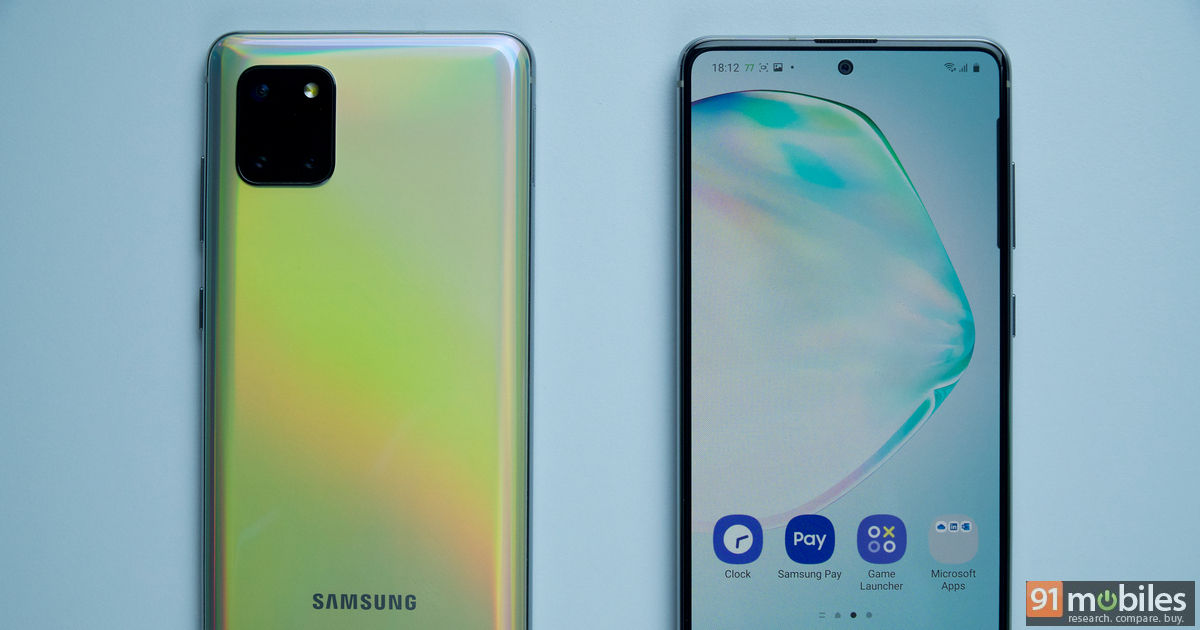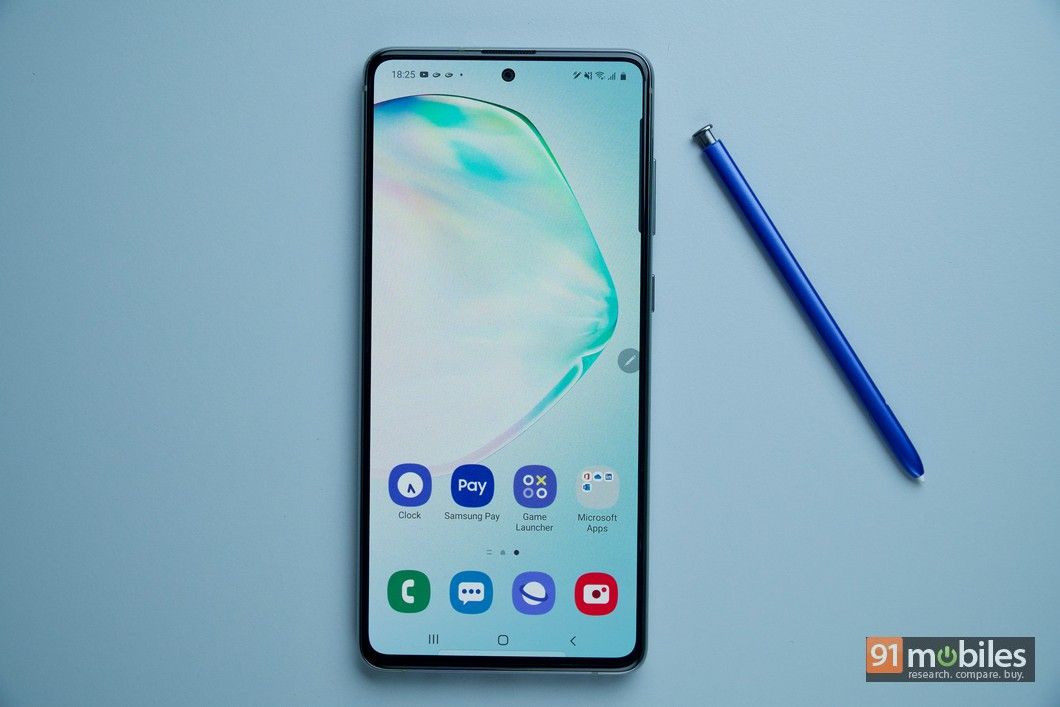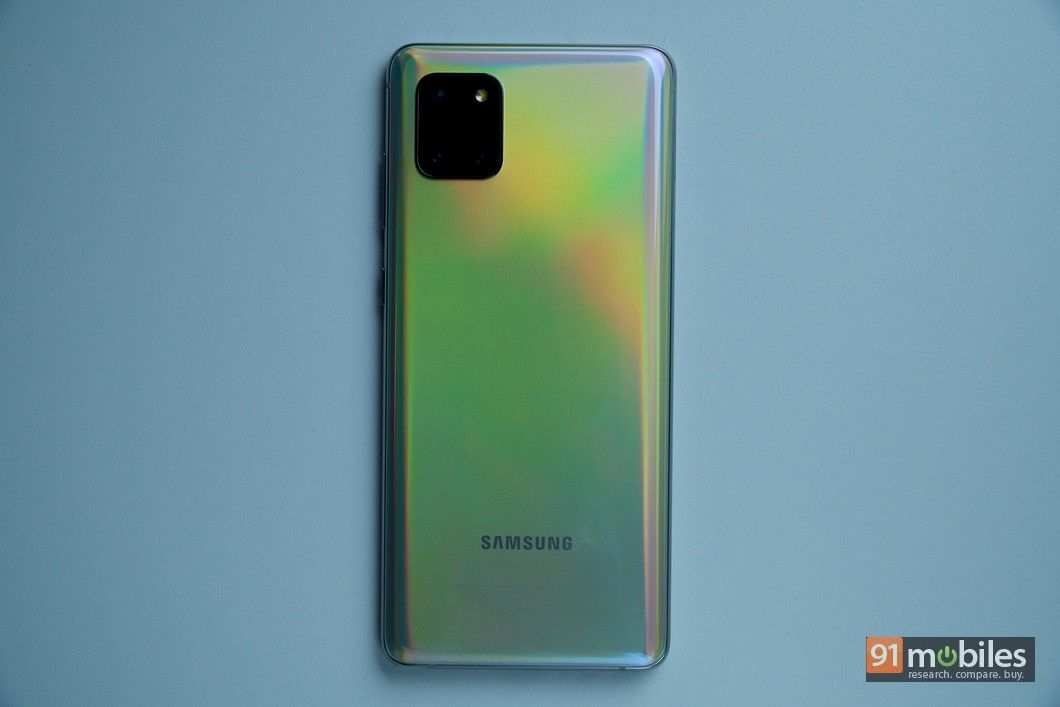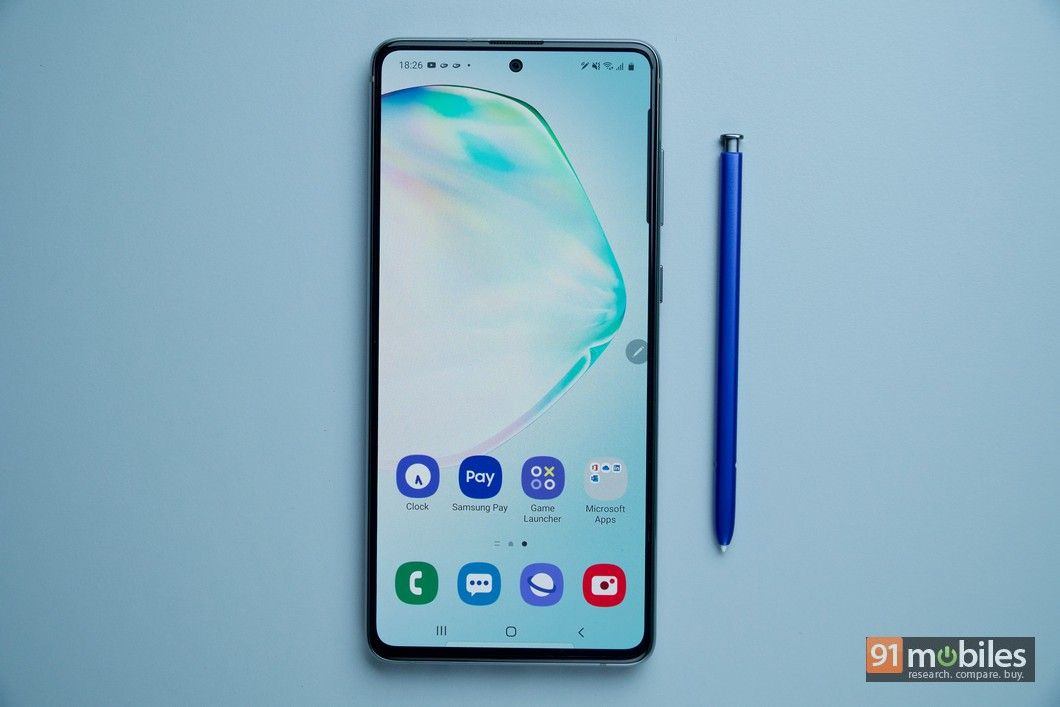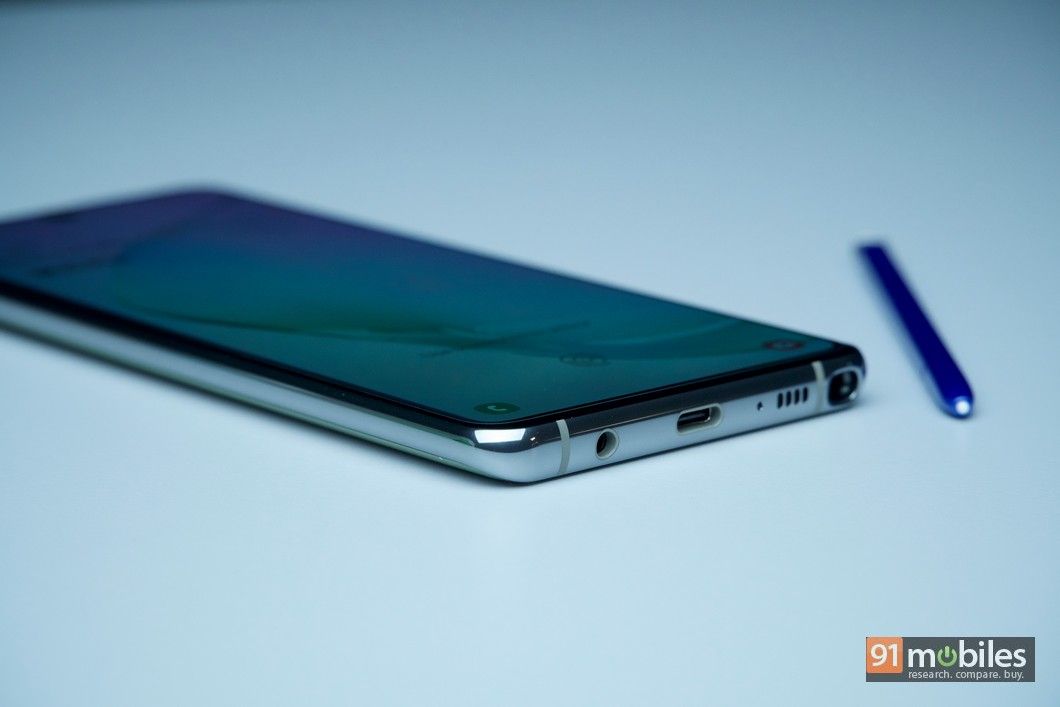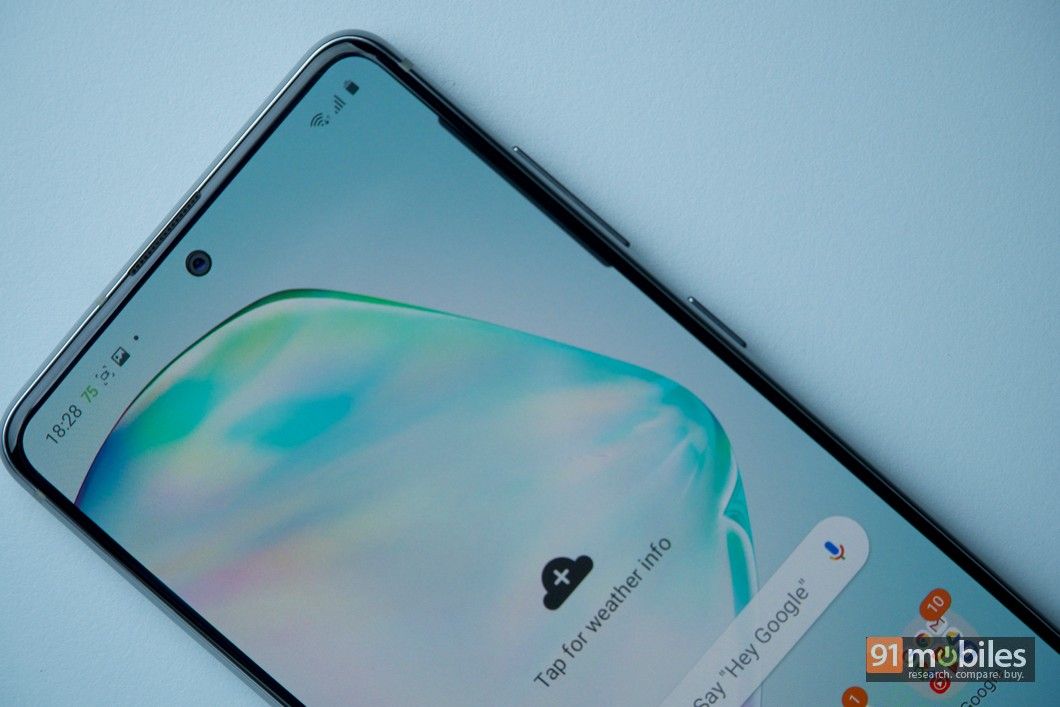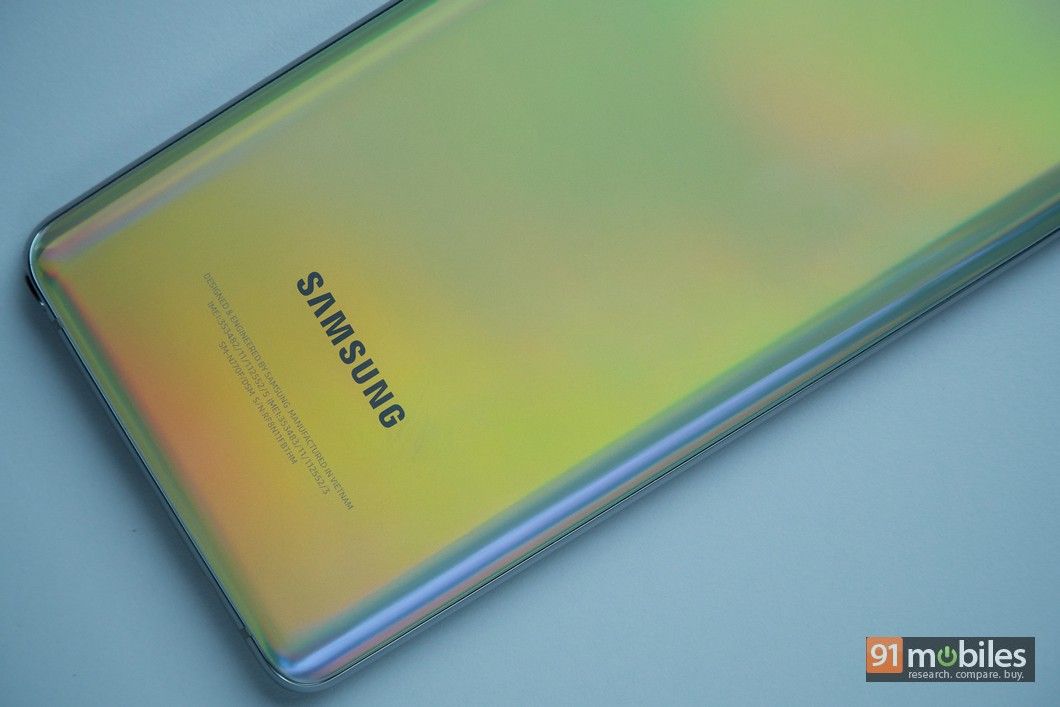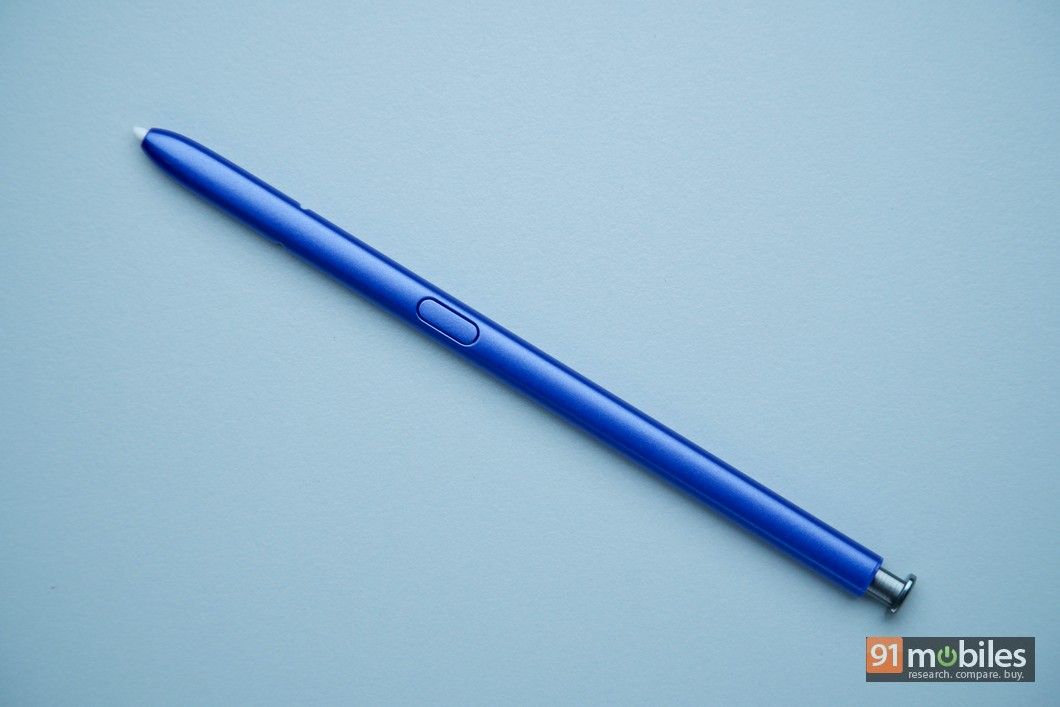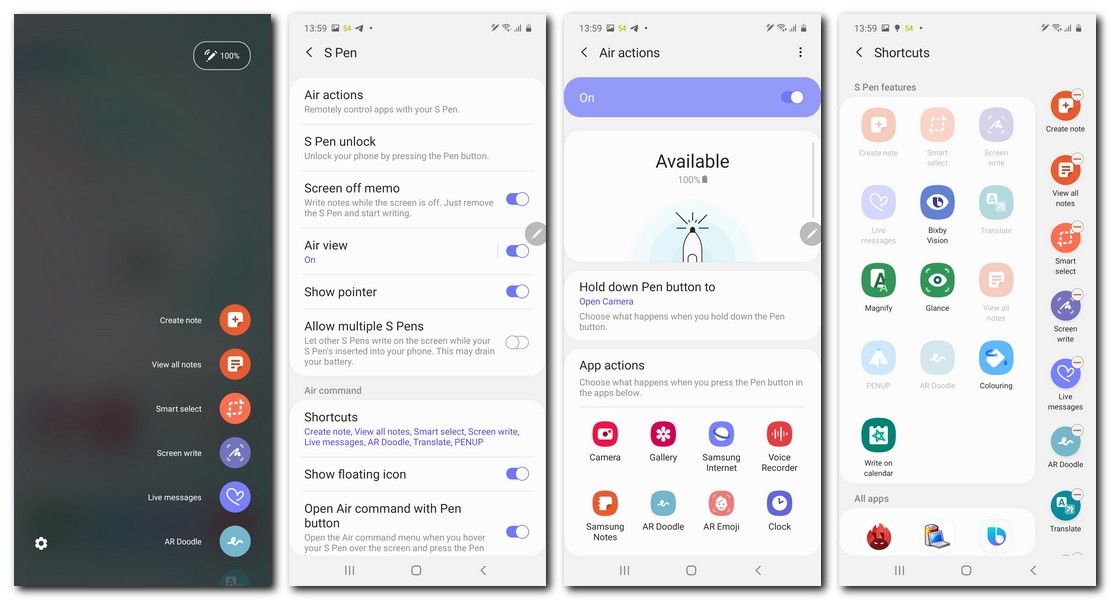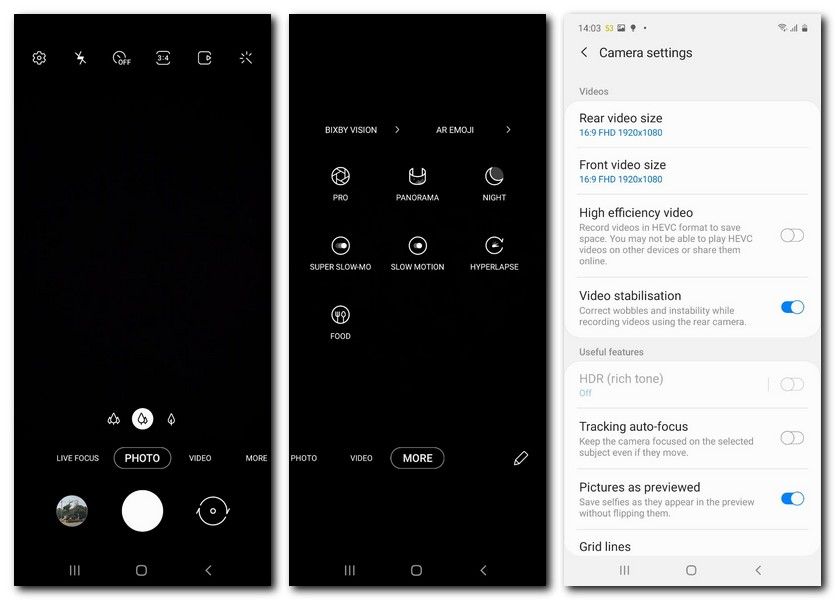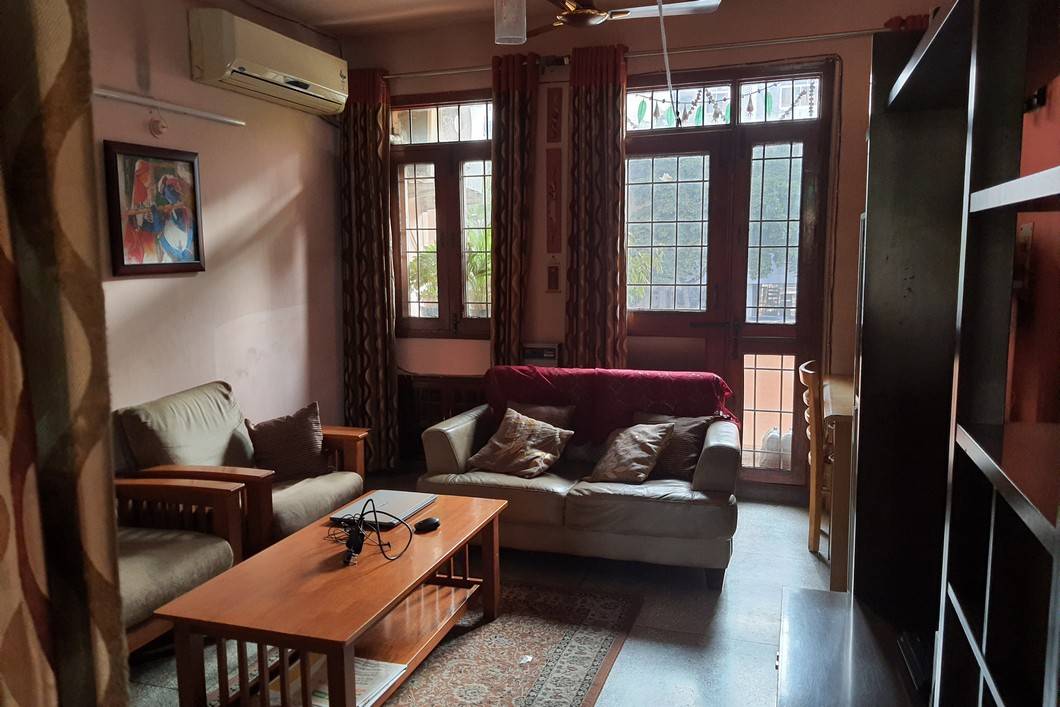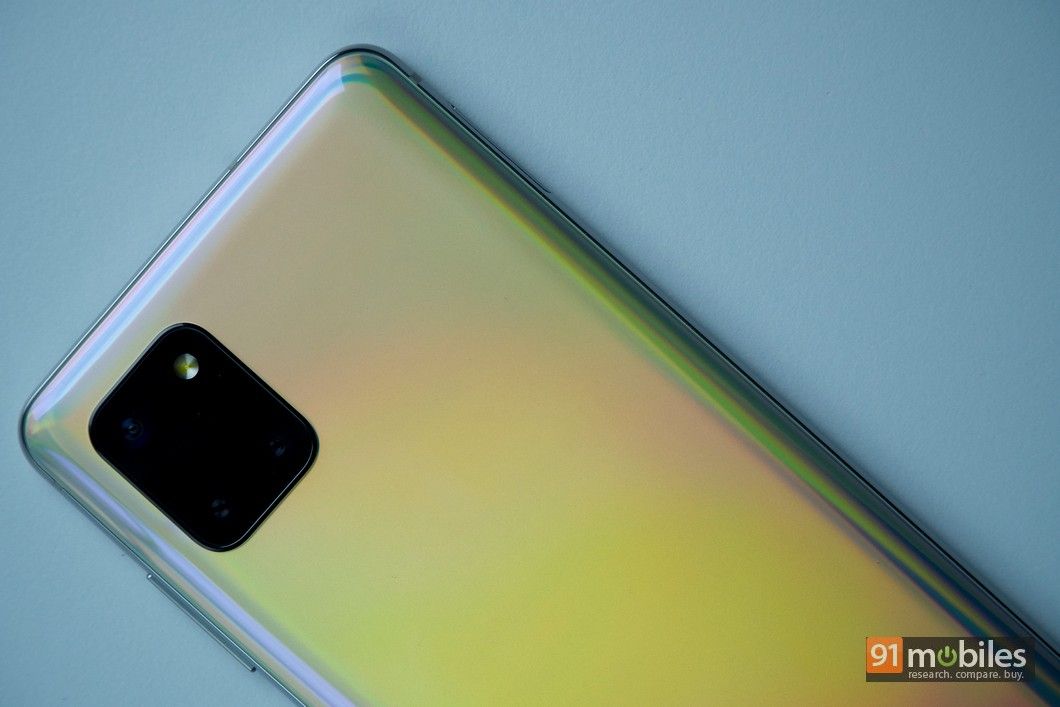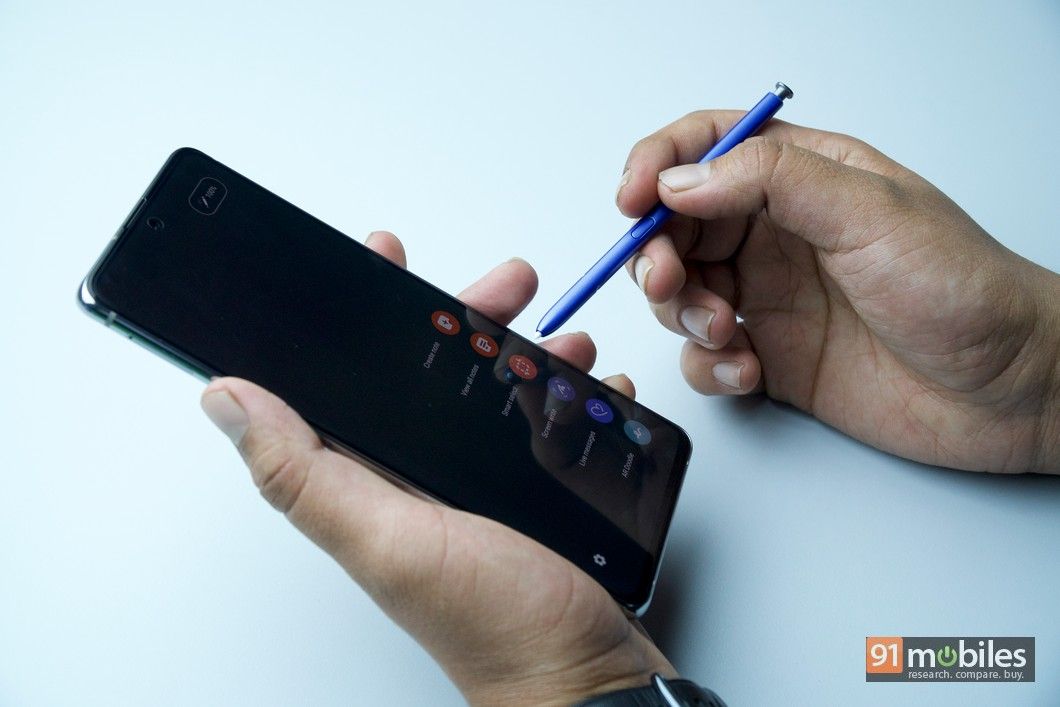The Galaxy S series and Note series have been Samsung’s most premium offerings in the smartphone segment for a decade. These devices are the pinnacle of the South Korean electronics giant’s mobile technology, and come with a price tag to match. As such, these premium flagships might not appeal to the masses in price-sensitive markets such as India. However, the more affordable M series and A series caters to a wider audience. It came as little surprise that the Galaxy A50 was the best selling smartphone from the company globally last year. Piggybacking on this mantra of providing great specs at affordable price points, and also utilising the premium Galaxy Note series name, Samsung has come out with the Galaxy Note10 Lite.
This is the very first time that Samsung has announced Lite versions of its premium tier phones. The Note10 Lite, along with the Galaxy S10 Lite (review), are aggressively-priced phones which bring in quite a lot of the premium features from their respective older siblings at a lower prices. The Note10 Lite’s starting price of Rs 38,999 puts it in OnePlus territory and that, I believe, could be one of the reasons behind the phone’s existence (though this statement probably applies better to the S10 Lite). More importantly, potential buyers interested in the features offered by Samsung’s S-pen now have an affordable option to consider. OnePlus has been claiming the title for the most sold premium smartphone for some time as per a Counterpoint report, and Samsung isn’t one to be left behind. With the affordable flagship space being crowded by the likes of the Realme X2 Pro (review), ASUS ROG Phone 2 (review), Redmi K20 Pro (review), OnePlus 7T (review) and others, it has become imperative for Samsung to capitalise on this fast-growing segment. The question obviously is whether the Note10 Lite the solution for Samsung? There is also the option of straight-up buying the S10 Lite which has arguably better specs and costs only Rs 1,000 more. I used the Note10 Lite for some time and here are my thoughts.
Verdict
The Galaxy Note10 Lite is a one-of-a-kind phone for productivity needs, coming in at an affordable flagship price point. The S-pen and its varied use cases are tools for users that are not just gimmicks, but of real-world importance. The only thing that is holding the phone back, to a small extent, is its older chipset and a lack of a higher refresh rate screen.
Design and display
The design of the Note10 Lite is similar to the S10 Lite, with the difference arising only in the camera layout and the presence of the S-pen in the former. The Note10 Lite sports a smooth, unibody ‘glasstic’ finish at the back with the same prism-like finish as the Note10 (review) which shows multiple colours when viewed at different angles. Avoiding the glass back is one effective way of cost-cutting on the Note10 Lite. This means that the Note10 Lite does not support wireless charging, a feature that is anyways not prevalent in the affordable flagship category.
Another significant difference is that the front of the phone has a flat screen rather than the curved one that we are so used to seeing on Note series phones over the past two-three years. However, the slanting edges along the back provide for a firm grip on the phone, although at 200g the phone is not exactly lightweight. The rectangular camera bump houses the triple-camera setup along with the dual-LED flash.
Feature-wise, the biggest inclusion is the return of the headphone jack on the Note10 Lite, a feature that had been unceremoniously dropped from the Note10 series last year. Besides the jack, there is also the Type-C port, a speaker grille, and the S-pen present on the phone’s bottom. The right side of the phone holds the volume rocker button and the power button, while the right side of the phone has the dual-SIM slot along with a separate microSD slot as well. There is no official IP rating on the phone for water and dust resistance.
Samsung is known for world-class displays on its devices, and the Galaxy Note10 Lite sticks to the same mantra. The device offers a 6.7-inch Super AMOLED display with 1,080 x 2,400 resolution, and it’s by far the most colour accurate I’ve seen in the segment. I don’t have a quantitative measure for telling you how good the screen is, but the vividness and contrasty nature along with the delivery of deep blacks is something that I’ve only seen on the premium Galaxy S series phones. Naturally, the display is extremely immersive for any kind of content viewing. The brightness levels on the Note10 Lite were also fantastic with no legibility issues under even the harshest of sunlight. You also get the usual features like adjustable colour temperature and the ability to enable the night mode.

Pro Tip: Samsung Galaxy Note 10 Lite features Glance lockscreen
Glance lets you view a variety of content on the lock screen, including sports scores, fashion trends, travel tips, and news. Apart from that you can even play games and watch short videos as well. All you need to do is press the power button and simply swipe left on the lock screen. Glance also lets you personalize the content according to your liking — so all your favorite content is at your fingertips.
The familiar Infinity O display is present on the Note10 Lite with its small punch-hole cutout for the selfie shooter in the top centre of the phone. Personally, I prefer this implementation over any kind of teardrop notch or pop-up mechanism. The one thing that I really wanted on the Note10 Lite (and was sure that it will not happen) is a high refresh rate display like the one seen on the OnePlus 7T and ASUS ROG Phone 2. Clearly this buttery smooth display (incidentally made by Samsung) that I’ve been using on my OnePlus 7T will be first introduced on the Galaxy S20 and then trickle down later on to Samsung’s mid-range and budget flagship smartphones.
S-pen
It can’t be a Note phone without the almighty S-pen. The big thing here is that almost all the extensive S-pen features on the Note10 have been ported over to the Note10 Lite. The Air gesture features such as swiping the S-pen in the air for navigating through the images in the gallery app however, are not there on the Note10 Lite. That being said, stuff such as screen write, translating handwriting into text, operating the S-pen as a remote to click photos, smart select and more are still present.
I was surprised at the level of accuracy that my handwriting (which can be considered bad, to put it mildly) was being converted to text. To top that off, the sharing options for that are also extremely easy to find and you can even make a PDF out of it. This feature works with as many as 62 languages such as Hindi, Gujarati etc. These are things that people will actually use and increase their productivity. Then there are other fun features such as AR Doodles which lets you draw over the subject in your camera’s viewfinder and the doodle will then stay there as you pan around the room. The S-pen will automatically charge inside your phone and rated to last for up to 10 hours on a single charge. You can read about the rest of the S-pen features in our review of the Note10 Plus.
The S Pen I think, is the standout feature that will gravitate users to buy this device. At its price, there is no phone which offers a stylus and one with so many varied functions. Whether it is for showing off or for actually doing some productive work, the charm of the S-pen, which was only available on Samsung’s most premium phone till now, is undeniable and has grown on me.
Cameras
Apart from displays, Samsung is also in the business of making great camera hardware as was evident on its premium S series and Note series of smartphones. While our review of the S10 Lite details the extensive 48MP camera setup with super steady OIS and more, the Galaxy Note10 Lite gets a completely different, albeit a familiar camera setup. It offers a 12MP primary lens with a fixed f/1.7 aperture, a 12MP telephoto snapper and a 12MP wide-angle shooter with f/2.4 aperture and a 123-degree field of view.
After analysing the photo samples from the Galaxy Note10 Lite, I can safely say that it has one of the best cameras in the budget flagship category. The photos happened to be extremely detailed and contrasty with accurate colour reproduction. The dynamic range across various sunlit environments was extremely good as was the focus on the subject. Close-up shots were also detailed with a soft blur behind the subject that was very easy on the eye. In general, all photos are extremely crisp and noise-free. However, unlike the Galaxy S10 Lite or even the OnePlus 7T for that matter, the Note10 Lite doesn’t have a dedicated macro sensor.
The ultra-wide lens is quite good and identical to the one seen on the Galaxy S10 Lite. The 123-degree field of view is certainly wide enough to fill more in the frame than it could be possible from the main camera. For the most part, the images are quite detailed and exposure is compensated very well. Dynamic range and colour temperature might vary slightly in photos but not by much. However, at night it is advisable not to use the lens as it does not have the Night Mode integration with it. There is also an optical 2X zoom lens as well which will let you take zoomed-in shots from distance which works fine in the right lighting. Additionally, the phone also has the Live Focus feature which gives you good portrait mode shots with a nice background blur that can be customised while taking the photo.
Galaxy Note10 Lite has the dedicated Night Mode option that Samsung has been shipping on most of its phones for the past year. Like all other night modes, Samsung’s implementation also uses a combination of AI, computational photography and a long exposure shot to churn out detailed photos in low light conditions. In the case of the Note10 Lite the photos become quite bright with good details. The only qualm I have is that sometimes these pictures can become something akin to an oil painting. While that is not necessarily a bad thing, I prefer the more natural look that Pixel’s Night Sight brings. Even so, if you discard the Pixel 3A and 3A XL (review), in its price point the Galaxy Note10 Lite probably has the best low light photography.
Then there is the 32MP camera housed in the punch hole in the front. I was decently impressed by the camera quality and the details that the phone captured on my face, though at times the sensor did employ face smoothening. Separation from the background is also quite nice in the Live Focus mode.
In terms of video, the Note10 Lite can record upto 4K @60 fps and also super slo-mo @960 fps. There is a super steady mode on the phone which will reduce a lot of video shake but its quality is not as good as the Galaxy S10 Lite or the OnePlus 7T as well.
Performance and software
Unfortunately for the Note10 Lite, it is still grappling with processing hardware from two years back and it shows in graphically-intensive tasks such as gaming. The Exynos 9810 SoC which is equivalent to the Snapdragon 845 launched back in 2018, is not as optimised to handle AI or gaming as the newer Snapdragon 855 present in the Galaxy S10 Lite or the OnePlus 7T. Normal day-to-day tasks are no hinderance obviously. This includes running multiple heavy-duty apps such as Facebook, Instagram, Gmail, Chrome and more in the background and switching between them. A facilitator to this is also the UFS 2.1 storage and 8GB of RAM.
However, the Mali G72MP18 is not one of the greatest GPUs out there and certainly not better than the Adreno 640 seen on the S10 Lite and OnePlus 7T. While PUBG Mobile and Call of Duty Mobile run on the highest settings, there are still some tidbits that are not possible due to hardware limitations. For example, the shadows option is not visible on CoD Mobile or the Extreme frame rate option on PUBG Mobile when you run both the games on the Note10 Lite. Now I’m not saying that this is a deal breaker. But if gaming is something that you are looking for, the OnePlus 7T or the Asus ROG Phone 2 make better sense, both of which have high refresh rate displays and also better chipsets.
As far as authentication goes the Galaxy Note10 Lite uses an in-display optical fingerprint scanner as opposed to the more technologically advanced ultrasonic scanner in its older brother. While the sensor was generally reliable, there were times when the device just refused to open even after multiple long presses. The same can be said about the face authentication mechanism which has replaced Samsung’s Iris scan feature in all its premium phones. Apart from that, I had no discernible problems with the call quality from the earpiece and the mic. The speaker, however, was slightly tinnier than I had expected, although it is loud enough to hear from the other end of a long room.
The Galaxy Note10 Lite runs OneUI 2.0 based on Android 10, and it is one of the first phones in 2020 to do that straight out-of-the-box. As I had mentioned in the Galaxy A51 (review) review, this new approach to UI by Samsung gets a thumbs up from me. It is one of the better Android skins in the market and takes a lot of inspiration from stock Android as a whole. This includes a simplified settings menu, a system-wide dark mode and also bigger icons for the drop-down quick action menu. Then there are the software customisations which open up after you pull the S-pen out of the phone. You can customise the widgets that appear when this action happens, and there is also a separate settings menu for the S-pen wherein you can pick what happens when you double-click or single-click the S-pen button in different apps. Even so, Samsung still hasn’t dispensed with its significant amount of bloatware which includes double apps for the browser, gallery, and more.
Battery
The Galaxy Note10 Lite packs in a massive 4,500mAh cell which has a higher capacity than the Galaxy Note10. The gripe, however, is that while the latter supports 45W fast charging, the newer model only has 25W support. In our standard battery drain test which involves playing a video on loop, the phone lasted about 22 hours which is standard for a phone of this battery capacity. As for charging speeds, the phone was completely juiced up in 110 minutes. Real-world usage saw the phone last about one full day which includes operating the phone in 4G, playing about an hour of Call of Duty Mobile and full-time operations of my social media handles along with watching about 2 hours of Netflix.
Final Verdict
Considering the competition in the Rs 40k price bracket, the Galaxy S10 Lite is also a phone that is worth a buy if you want to forego the S-pen for a better processor and better video-taking capabilities. If high refresh-rate and gaming is on your mind, along with a decent camera and display, then you cannot go wrong with the OnePlus 7T.
However, the way I see it, there are a few compelling reasons why one should consider the Galaxy Note10 Lite over its competitors.
- The first and most important feature is definitely the S-pen. It is a productivity tool like none other.
- The cameras on the Galaxy Note10 Lite are truly exceptional
- There is a class-leading display on the phone.
Table of Contents
Editor’s rating: 4 / 5
Pros:
- Amazing Super AMOLED display
- S-pen is quite useful
- Sleek design
- Impressive cameras
Cons:
- Processing seems week
- No high refresh rate display
- No IP rating
 Samsung Galaxy Note 10 Lite
Samsung Galaxy Note 10 Lite
|
vs |
 Samsung Galaxy S10 Lite
Samsung Galaxy S10 Lite
|
 Samsung Galaxy Note 10 Lite
Samsung Galaxy Note 10 Lite
|
vs |
 OnePlus 7T
OnePlus 7T
|

